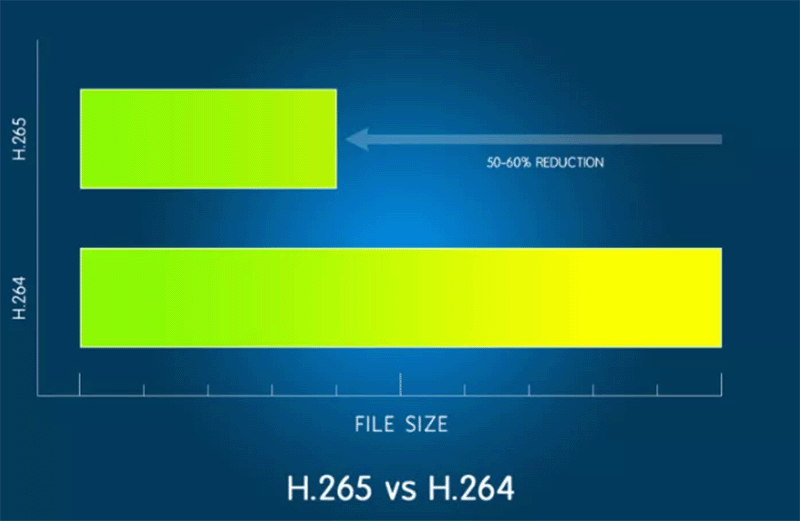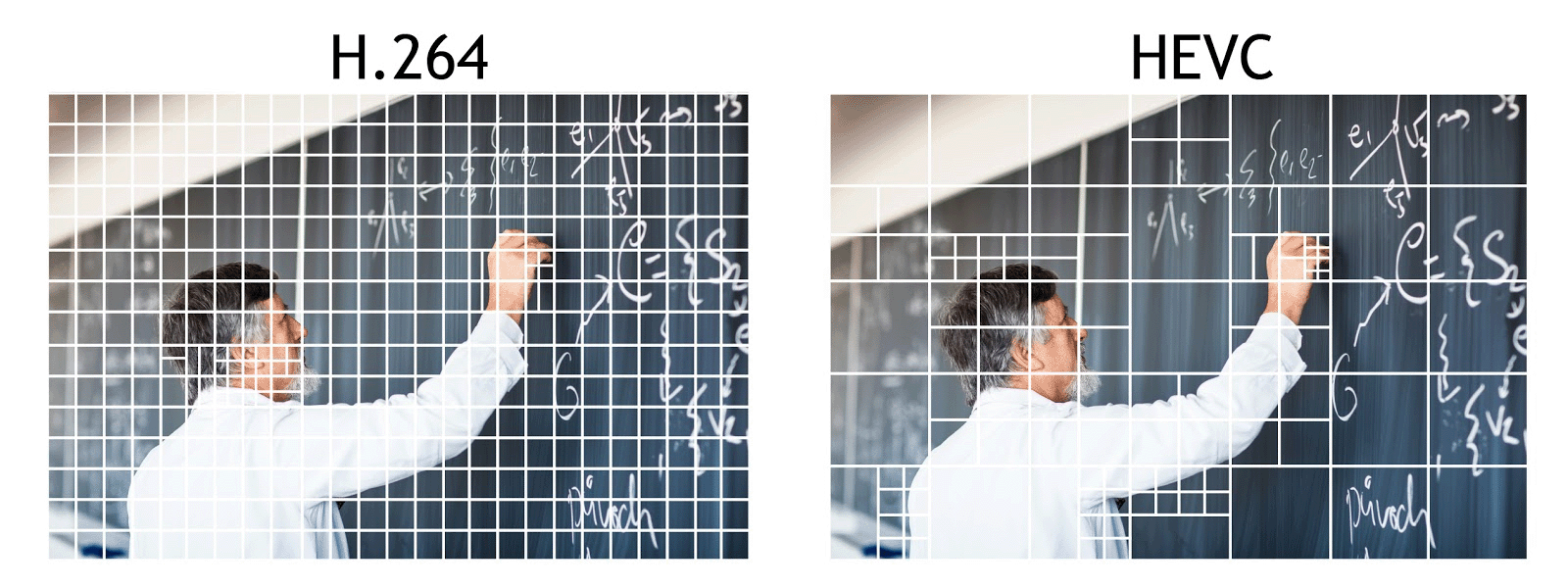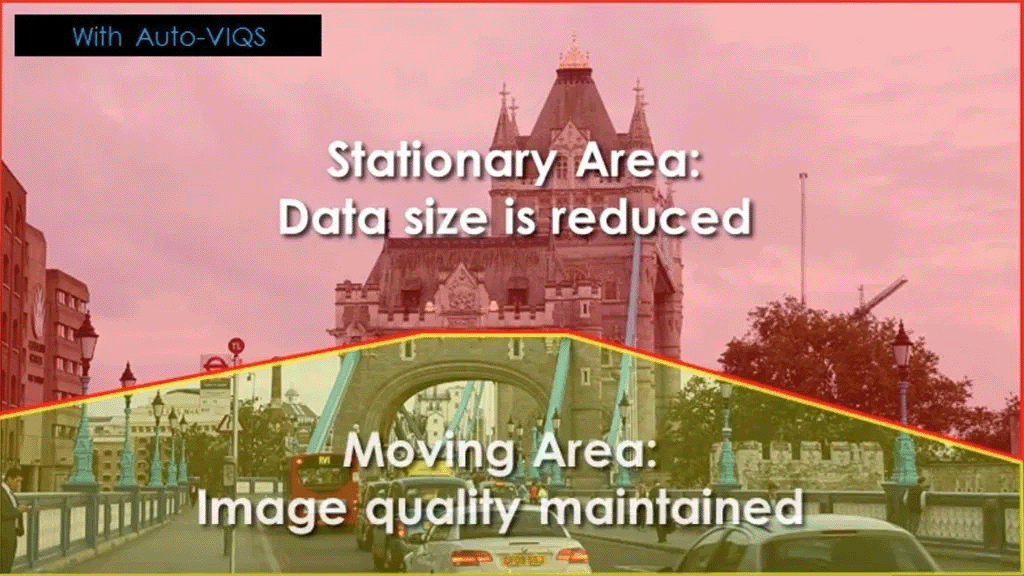| Українська | English | |||||||||||
|
|||||||||||
| News | About company | Service-centre | OB Van/SNG Rental | NextGen Energy Solutions | Contact us |
|
|
Engineering Service, Inc.
» News News H264 has been a staple of video production since its inception in 2003, and has now been updated thanks to the new H265/HEVC standard, which promises to be twice as efficient. It is already found in cameras from Panasonic including the CX350, EVA1, GH5 and now the S1. As a result, we wanted to provide an overview of the Codec and what it means for us.
H264 (or MPEG-4 AVC) has held its own for over 15 years, and for good reason. It allowed us to reduce the file sizes of our content in a revolutionary way when compared to MPEG-2 and other predecessors of video compression. H264 was seen as a major reason for the explosion of platforms such as YouTube, as it solved the problem of reducing the file sizes of video content for streaming, which up until that point had been a major challenge for everyone. Can you imagine sending files in ProRes HQ to mobile devices over 4G?! We didn’t think so, either. Now that we have seen an increase in image resolution to 4K and the use of 50p instead of 25p, this has multiplied everything even more. H264 needed a refresh to support 4K production, hence why the standardisation of H265 has come at the right time. What is a Codec ? Codecs are one of the fundamentals when it comes to in-camera design and content delivery. The Codec (COmpression/DECompression) makes it possible to ensure that a video that requires a data rate of 800 Mbps only needs 50 at an equal level of visual quality. How is this possible? 1. Without getting too technical(!), the Codec firstly analyses an image, and thanks to clever algorithms, it will cut the image into a grid and eliminate everythign that is redundant through prediction. In other words, if 50 pixels are identical, it will keep only one as it has calculated that the other 49 are the same. 2. The camera will only record one image every X images (often that number is 12). The Codec will then only keep what has changed within the image. For example, if completing a static interview, the Codec will detect that the background does not change and therefore only deal with the interviewee.
The more efficient the Codec is, the more power is required for encoding and decoding during the edit. It is this reason alone that means many users continue to use proxies when shooting. So why the switch to H265? As we have seen, after being a standard for more than 15 years, H264 can be found everywhere. So why should we retire the Codec? The main reason for this is that our needs are changing: • We want to shoot in 4K (at least) • We are gradually moving towards HDR • We would like to have a 10-bit colour sub-sampling for Colour Grading, and to support the introduction of new consumer displays that require BT.2020 colour space for HDR. All these new needs go far beyond the H264 standard, which does not support these features as they were very much in their infancy at the time of its standardisation.
The increase in pixel count and colour spacing also means an increase in the amount of information that needs to be recorded during filming. The main advantage of H265 is that it can be twice as efficient than its predecessor. This allows the EVA1 or CX350 to offer 4K 10-bit in 50p for a throughput of 150Mbps! Better still, for cameras that can stream its signal over IP i.e. PTZ cameras, the reduction in the necessary throughput makes it possible to consider switching from 4K via an internet connection. H265 Technology The Codec H265 (HEVC – High Efficiency Video Codec), achieves this performance mainly thanks to the following technologies: • The Codec no longer cuts an image into a fixed grid composition of 16 x 16 pixel squares. Instead, it adapts this grid according to what is happening within the image. If for example we were shooting on a plain background, where H264 will use 20 identical squares, H265 will only use one. This means that the Codec constantly adapts to match the movements in the frame, saving signficant space.
• Within H265, there is a far greater level of prediction taking place than with H264, with 32 squares for H265 compared to 9 for H264. If we considered a vehicle moving from left to right within a frame, the H265 Codec will suspect that between two images that the car is moving forward, and predict the speed of movement of the pixels that make up the vehicle.
How does H265 work when it comes to post production? At the moment, this is still a little tricky, just as it was for the early days of H264. At the time of writing, all latest versions of editing software supports H265. Don’t expect to be able to edit H265 content with speed on a PC that doesn’t include on-board hardware decoding, which is a piece of your processor (CPU) or graphics card (GPU) that is specifically dedicated to decoding the format. The situation should change very quickly, as H265 is gradually gaining ground in all computer chips. Should I work with H265 now? If you want to capture content in 10-bit HDR using standard SD cards, we recommend doing so. The 150Mbps H265 Codec found in the EVA1 and CX350 for example gives you the best picture quality to calibration capability ratio. The same can be said for long shoots i.e. documentaries, where storage space is a problem as you cannot necessarily offload your cards that easily. What must be conisdered is that your post-production may become a little less fluid. H265 is straightforward to edit dependant on the specifications of your computer, but if you were to perform a multicam shoot for example, you would have to use proxies or transcode the rushes. One thing we are sure of however is that H265 is the format of the future. « To the list of news |
|
|||||||||||||||||
 |
+38 (044) 593-18-20 +38 (073) 593-18-20 +38 (096) 532-96-82 +38 (095) 532-96-82 Service center Telegram @Engineer_Service |

|
|
|||||
 |
e-mail: engineer-service.tv 15 Vavylovykh str., Kiev, 04060, Ukraine Authorized service centre of Panasonic, Sony, JVC, Fujinon, Canon |
|||||||












